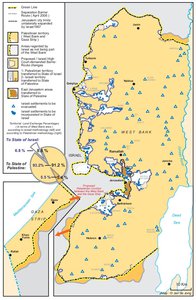ARAB TOWNS AND JEWISH SETTLEMENTS IN PALESTINE, 1881-1914
Map Details
Between 1882 and 1914, an average of 2,000-3,000 Jews entered Palestine every year in what was the
largest influx in over 400 years. Many eventually left, especially in the first portion of this period, though the
majority remained and the total Jewish population in Palestine by the end of the period has been put at
some 60-63,000. The period in question straddles the first and second aliyoth or Jewish immigration waves,
which were combined with the beginnings of organized Zionist land acquisition and colonization in
Palestine.
By the early 1880s Russian proto-Zionist movements were actively promoting the idea of Jewish
colonization in Palestine. These movements were not driven by religious conceptions, but rather by ideals of
secular reform rooted in the currents of socialist populism in Europe. Their efforts, coterminous with an
increase in the number of Russian Jews fleeing Tsarist repression, brought about the first aliyah (1882-
1903), during which at least 25,000 Jews arrived in Palestine. Though later Zionist historians would claim
otherwise, the majority was without nationalist ideals and instead fled rising discrimination at home. Only 5%
of those arriving in this period participated in forming the early Zionist colonies, the first of which was Rishon
L’Zion (First to Zion) - founded in 1882 on land belonging to Arab villagers from ‘Eyun Qara.
The ineffectual and unpopular colonial enterprises of the young Zionists soon came to the attention of
wealthy French Jewish philanthropist Baron Edmond de Rothschild, who invested enormous amounts of
money in the new colonies, oversaw the provision of experts in plantation development and training and
finally came to subsidize nearly the whole program. In 1900, following the rise of the World Zionist
Organization (WZO), Rothschild transferred his plantations to the Jewish Colonization Agency (JCA), which
he proceeded to generously finance. By then, 22 plantation-colonies were operating.
From 1905-1914, the second mass immigration took place. This time, with the Zionist platform nearly ten
years old and its requirement for land acquisition and the demographic domination of Palestine official, the
emphasis on colonization was more pronounced: “[i]t is necessary, first of all, that all, or at least most, of
Eretz Israel’s lands will be the property of the Jewish people.” It was this second wave of immigrants that
established the political leadership of the new Jewish community, founded its first kibbutz and politicized its
relationship with the pre-existing Jewish community and the Palestinian Arabs. By 1914, at least 11,000
Jews were working on 47 rural plantations and cooperatives supervised and subsidized by the WZO, its
supporters or affiliate bodies.
Zionist land acquisition throughout this period occurred at the cost of the Palestinian fellahin, who found
themselves, as hired cultivators or tenant farmers under the Ottoman system, dispossessed of their
livelihoods and often forced into plantation labor or unfamiliar and underpaid employment. Ottoman
regulations limiting land sales were bypassed through bribery or intermediaries, as Jewish financiers as well
as the JCA spent vast sums in this respect. Palestinian occupants willingly sold less than 10% of all the land
acquired by the Zionists in this early period, while sales by Turkish Ottoman notables living elsewhere in the
Empire accounted for the majority of the Zionists’ acquisitions.
In the first six months of 1914, Zionist immigration reached a peak, with the arrival of over 6,000 Jews in
Palestine. Around the same period, a Jewish exodus from economically fragile and politically volatile
Europe saw up to 2.5 million Jews emigrate – the majority to the US. These figures confirmed the lack of
popular Jewish support for the Zionist program. Nonetheless, even the early Zionist endeavors had already
upset the demographic, economic and political balance in Palestine and incidents of violence and tension
were steadily rising, as the collision course that Zionist colonialism had set against the indigenous
Palestinians, their land and their own rising nationalism, became daily more apparent.
Related Maps
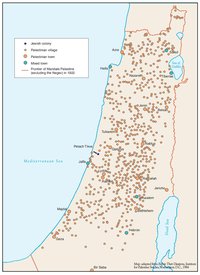
OTTOMAN PALESTINE, 1878
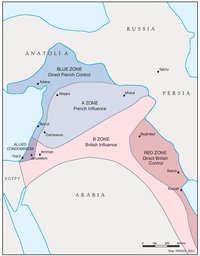
THE SYKES-PICOT AGREEMENT, 1916
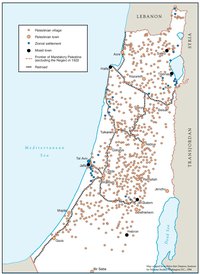
THE BEGINNING OF THE BRITISH MANDATE, 1920
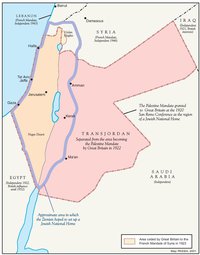
PALESTINE UNDER THE BRITISH MANDATE
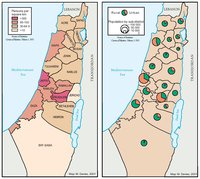
THE DEMOGRAPHY OF PALESTINE, 1931
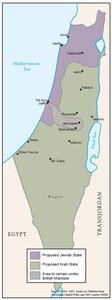
THE PEEL COMMISSION PARTITION PROPOSAL, 1937
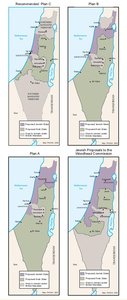
THE WOODHEAD COMMISSION PARTITION PROPOSALS, 1938
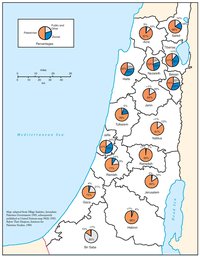
PALESTINIAN AND ZIONIST LANDOWNERSHIP BY SUB-DISTRICT, 1945
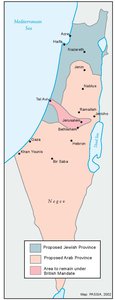
THE MORRISON-GRADY PARTITIONED TRUSTEESHIP PLAN, 1946
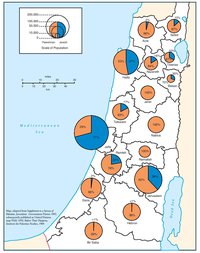
POPULATION OF PALESTINE BY SUB-DISTRICT, 1946
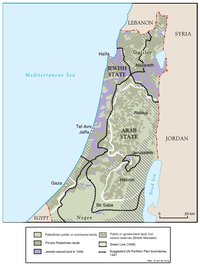
LAND OWNERSHIP IN PALESTINE, 1948
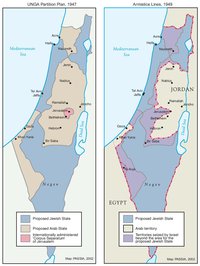
THE UNGA PARTITION PLAN, 1947 – THE 1948 WAR & THE 1949 ARMISTICE LINES
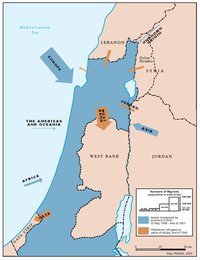
POPULATION MOVEMENTS, 1948-1951
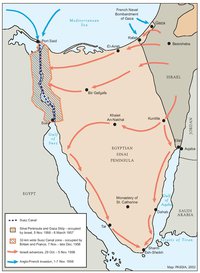
THE SUEZ WAR, 1956
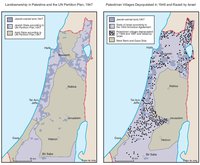
LAND OWNERSHIP IN PALESTINE AND THE UN PARTITION PLAN - PALESTINIAN DEPOPULATED AND DESTROYED VILLAGES, 1948-1949
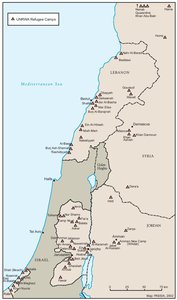
THE PALESTINIAN DIASPORA, 1958
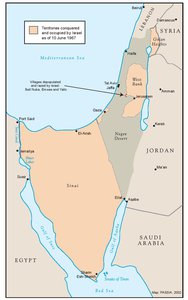
THE NEAR EAST AFTER THE JUNE 1967 WAR
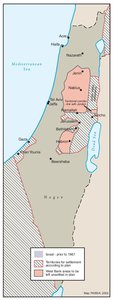
THE ALLON PLAN, JUNE 1967
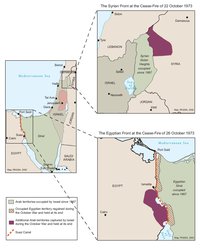
THE OCTOBER WAR, 1973
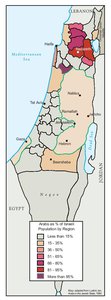
THE PALESTINIANS INSIDE ISRAEL, 1977
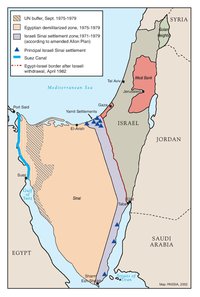
THE CAMP DAVID ACCORDS, 1978-1979
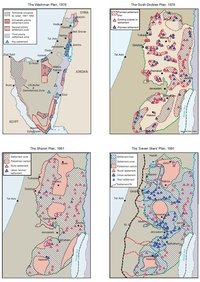
ISRAELI SETTLEMENT MASTER PLANS, 1976-1991
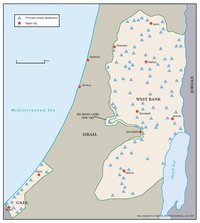
THE 1991 MADRID PEACE CONFERENCE & ISRAELI SETTLEMENTS
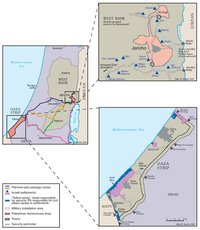
GAZA-JERICHO (OSLO I) AGREEMENT, CAIRO, 4 MAY 1994
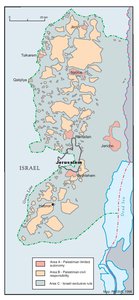
INTERIM (OSLO II) AGREEMENT, TABA, 28 SEPTEMBER 1995
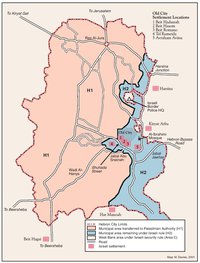
HEBRON PROTOCOL, 15 JANUARY 1997
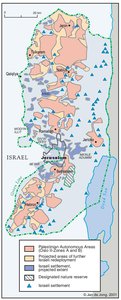
WYE RIVER MEMORANDUM, 23 OCTOBER 1998
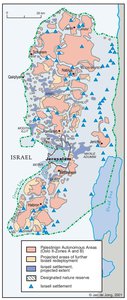
SHARM ESH-SHEIKH AGREEMENT, 4 SEPTEMBER 1999
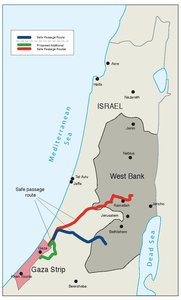
PROTOCOL CONCERNING SAFE PASSAGE BETWEEN THE WEST BANK AND THE GAZA STRIP, 5 OCTOBER 1999
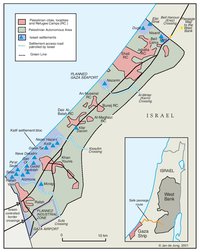
GAZA, 2000
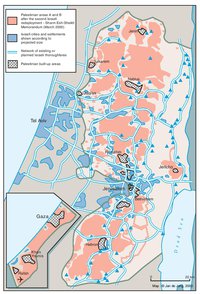
WEST BANK AND GAZA STRIP, MARCH 2000
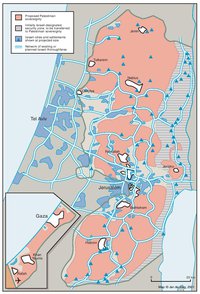
CAMP DAVID PROJECTION, JULY 2000
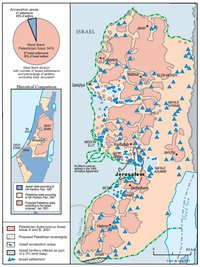
TABA TALKS PROJECTION, JANUARY 2001
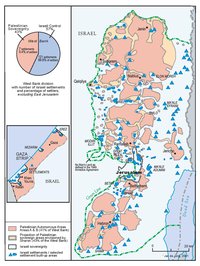
THE SHARON PROPOSAL, SPRING 2001
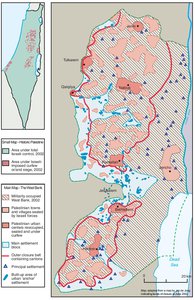
THE REINVASION OF THE PALESTINIAN TERRITORIES, 2001-2002
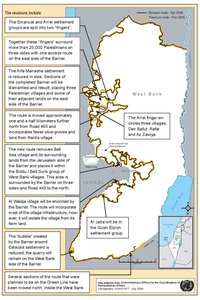
THE ROAD MAP, 2003
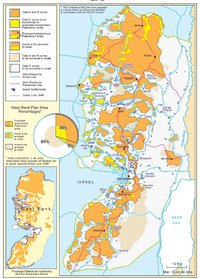
THE GENEVA INITIATIVE AND ACCORD, 2003
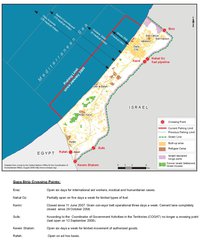
THE ISRAELI DISENGAGEMENT PLAN, 2003-2005
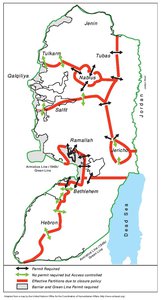
AGREED DOCUMENTS ON MOVEMENT AND ACCESS FROM AND TO GAZA, 2005
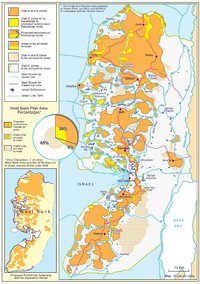
THE SETTLERS' PLAN FOR PALESTINIAN AUTONOMY, 2006
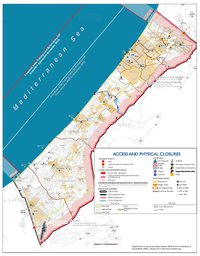
THE GAZA STRIP TODAY (2014)
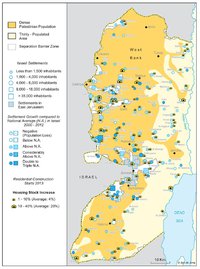
THE WEST BANK TODAY (2014)
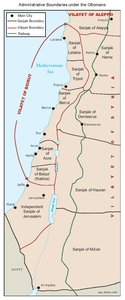
ADMINISTRATIVE BOUNDARIES
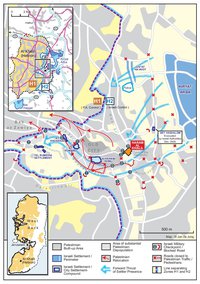
HEBRON
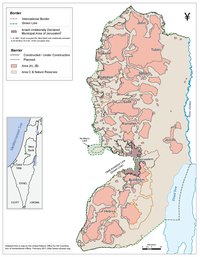
Area C
